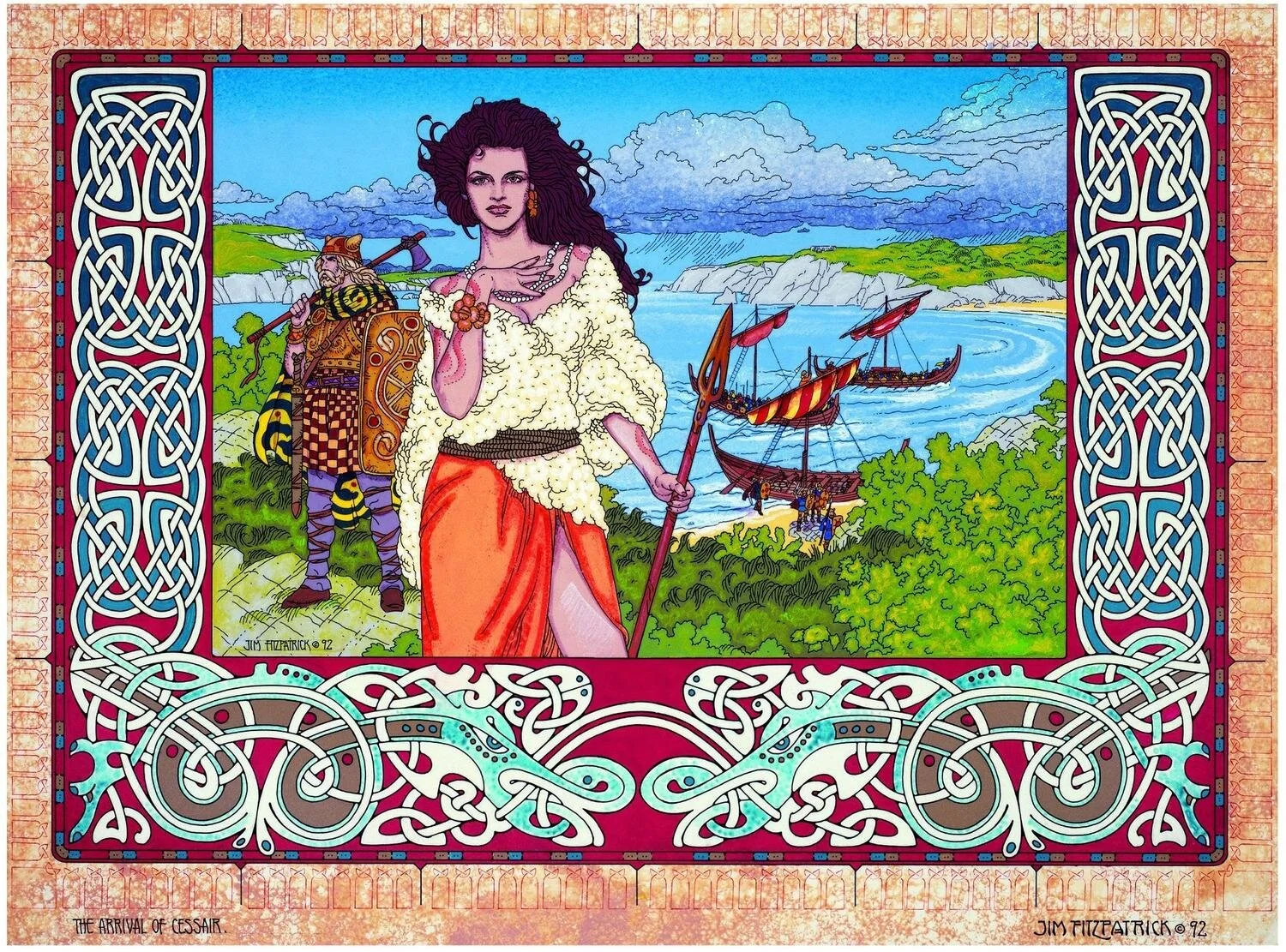The Power of Storytelling: Cessair vs. Eve
Not many people know that the first person ever to come to Ireland was a woman. But that’s what we’re told in the Lebor Gabála Érenn (The Book of the Taking of Ireland, also known as The Book of Invasions), which was written in medieval times to provide Ireland with a history stretching back to the beginning of the world, as well as to reconcile stories and beliefs from native pre-Christian mythology with the new church’s view of history.
The people who were led to Ireland by a woman named Cessair, so the story goes, were the first of six different peoples to settle here (the others are the people of Partholón, the people of Nemed, the Fir Bolg, the Tuatha Dé Danann, and the Milesians, or Gaels). Cessair was the daughter of Bith, a son of the Biblical Noah. In one of several different versions of the story, Noah tells her to take her people and sail to the western edge of the world to escape the oncoming Flood, because there is no more room on the Ark. And so Cessair leads 150 women and just three men out of Egypt along the River Nile, across the Mediterranean Sea, up the west of coast of Europe and, after losing two ships and a hundred women in a storm, lands with the survivors in the south-west of Ireland just forty days before the Flood. Cessair takes Fintán as a husband, Barrfhind takes Bith, and Alba takes Ladra; the rest of the women divide themselves up evenly among the three men. But after Bith and Ladra die, Fintan finds himself left alone with all the women, and flees. Cessair then dies of a broken heart, and when the Flood comes, Fintán is the only one to survive.
It’s likely that the story of Cessair has pre-Christian origins, because a similar story is contained within the much older Book of Druimm Snechta. In this case, the first woman in Ireland is Banba, who declares herself to be older than Noah, and to have escaped the Flood because she took herself up to the peak of an Irish mountain.
But does all of this really matter? After all, when we talk about ‘myth’ today, more often than not we use the word to mean a falsehood. And at best, isn’t mythology just a bunch of stories?
That may be true, but stories are powerful things. The stories we tell ourselves about our origins reflect how our culture views the world, our place in it, and our relationship with the other living things which inhabit it. The stories contained in the oldest Irish literature tell us that women were important. Women – or goddesses – settled the land, personified the land, shaped the land, and represented the moral and spiritual authority of the Otherworld. These old stories contrast dramatically with the way women are represented in later, more patriarchal traditions. In the Biblical story of Eve, for example, the First Woman was the cause of humanity’s sufferings, bringing death to the world, not life. This view of women paved the way for centuries of repression, and there are many examples of that repression continuing today.
Maybe it’s time to look back at those old stories, and remember who women once were in our native traditions, and can be again.
Sharon Blackie is a writer, psychologist and mythologist. Her most recent book is If Women Rose Rooted, a nonfiction book about the inspiration which women can derive from Celtic mythology. For more information, visit her website at www.sharonblackie.net
Discover more fascinating mythic stories from Bard Mythologies, master storytellers and keepers of ancient Irish wisdom. The Bard hosts a fascinating event series throughout the year, with a website full of epic mythic stories.
Click here to read the myth of Cessair, retold by Karina Tynan from the perspective of the feminine.
